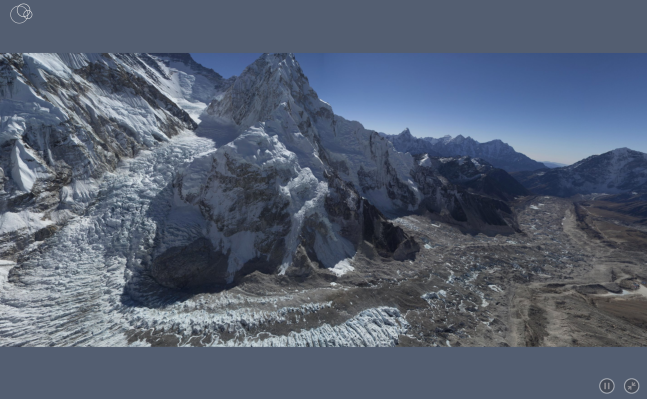Microsoft this morning lifted the veil on the next generation of Photosynth, its 3D image technology, with the release of a technical preview of the new Photosynth. This is the third generation of the technology, and is now recommended for those with D-SLR or point-and-shoot cameras, says Microsoft.
The prior two versions of Microsoft Photosynth, which offer the original synths and stitched panoramas, are still available on the main Photosynth website.
Meanwhile, the updated technology now supports four basic experiences: “spin,” “panorama,” “walk” and “wall.” As their respective names describe, each offers a different kind of 3D image viewing experience – a spin around an object as small as a teacup or as large as a glacial peak, Microsoft explains, a panoramic view, a walk – like down a path through the woods, for example – or a slide across a scene.
In order to create one of these four different synth types, users upload a set of photos to Microsoft’s cloud service then the technology begins to looking for points (“features”) in the successive photos that appear to the be same object. It then determines where each photo was taken from, where in 3D space each of these objects were, and how the camera was oriented. Next, it generates the 3D shapes on a per-photo basis. And finally, the technology calculates a smooth path – like a Steadicam – through the locations for each photo, and then slices the images into multi-resolution pyramids for efficiency.
The end result is an immersive, and smoother 3D photo experience which gives you more of the feeling of really seeing what the camera had captured. You can actually fly through the scene – it’s almost like a movie. There’s even a play and pause button. You can also share the Photosynth images to Facebook or Twitter, or embed them.
Into the Western Cwm by GlacierWorks.org on Photosynth
For end users, there’s an “expert shooting guide” available to help them learn how to make better synths.
Microsoft says that users are being approved for access on a first-come, first-serve basis, and will be alerted via email notification when they’re allowed in.
The company has also partnered on today’s release with mountaineer and photographer David Brashears, who captured Mt. Everest during one of the highest elevation helicopter flights ever attempted.
“I’ve never seen anything as smooth and glorious as the new Photosynth of my Everest flight. It’s like a video, but you can stop on any frame and zoom in,” Brashears said of the technology.
Edinburgh Castle walk by David on Photosynth
Photosynth has for a long time been one of Microsoft’s cooler technologies, having pushed the boundaries of 3D imagery and compositing for years.
But while Photosynth itself lets anyone delve into an immersive photography experience, Microsoft itself has been embracing 3D imagery within its other platforms, too. For example, earlier this month, the company launched a preview of its new Maps app for Windows 8.1, which included the addition of 3D imagery – something Microsoft tried a few years ago with Bing Maps online but later shelved. The release offered stunning 3D maps of 70 cities worldwide.
Today’s Photosynth technology builds on that vision, says Microsoft today on its Bing blog, by giving everyone access to “powerful tools to capture their own favorite spots around the globe.”
